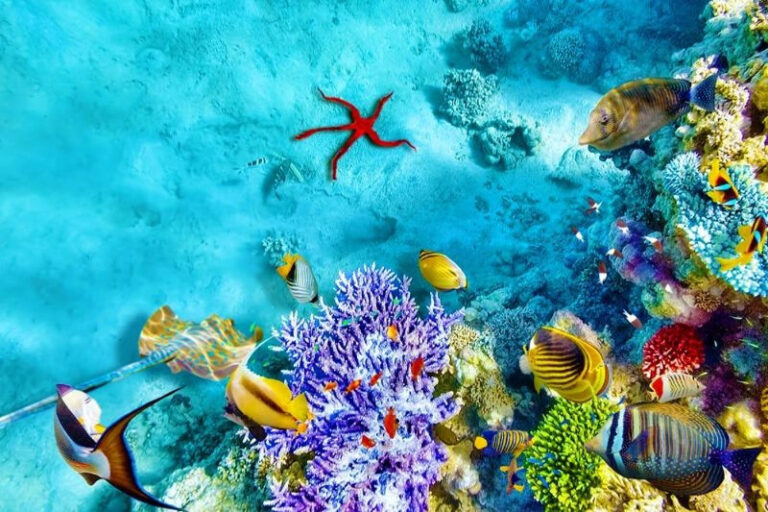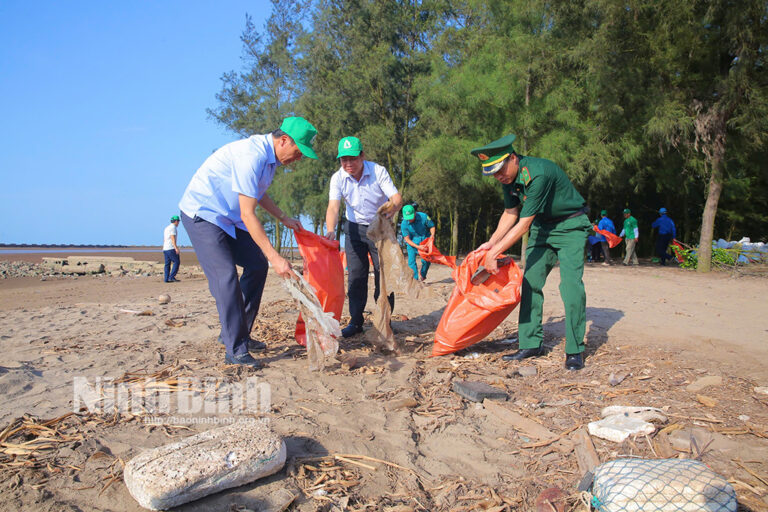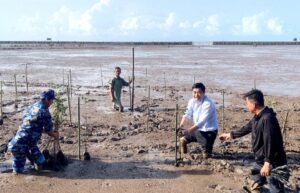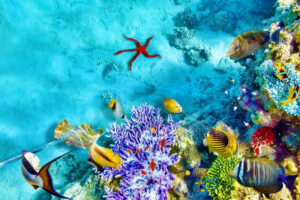La Khe Village (now in La Khe Ward, Ha Dong District in Ha Noi) was once famous for its silk weaving craft, with products made exclusively for kings, lords, and wealthy families of the past. After many historical ups and downs, the traditional craft is now only kept in the memories of a few people. Given this, Le Dang Toan, a local artisan, has exerted every effort to revive the fame of the village’s craft.
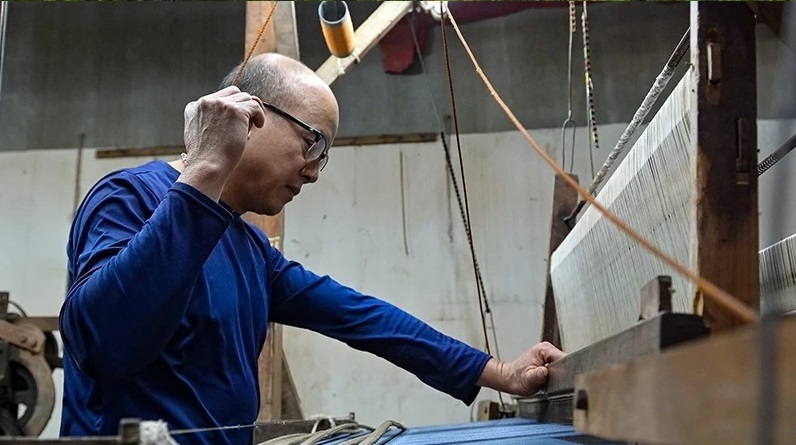
Artisan Le Dang Toan working on a traditional loom to make hand-woven silk. (Photo: The Dai)
According to ancient books, La Khe Village was formed in the 5th century, initially named La Ninh, with “La” meaning silk and “Ninh” meaning prosperity and sustainability.
In the 15th century, La Ninh Village was renamed La Khe, meaning the silk weaving village by the small river. The village was formed from the alluvial of the Day and Nhue rivers. The soil was fertile, favourable for growing mulberries, raising silkworms, and reeling silk.
In the early 17th century, some families drifted through La Khe and decided to settle down there. They taught locals to weave silk. Since then, La Khe became famous far and wide for its silk products with elaborate and delicate patterns and light, airy materials, suitable for the hot and humid tropical climate.
In 1823, the Nguyen Dynasty issued a decree establishing La Khe as a weaving workshop for the Hue Imperial City, and the whole village was exempted from military service to focus on developing the craft village.
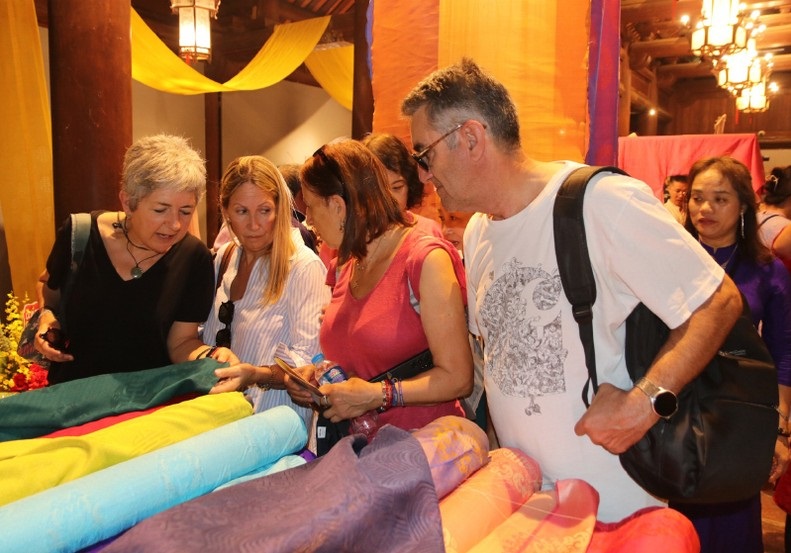
Foreigners explore La Khe silk (Photo: sovhtt.hanoi.gov.vn)
During the reign of King Minh Mang (1820-1841), a mandarin named Tran Quy was presented with such a beautiful piece of brocade that he decided to join several artisans in La Khe Village to figure out the secret of the weaving method.
The group of La Khe artisans usefully wove pieces of brocade with sophisticated patterns that were quite similar to the original sample. This helped La Khe villagers acquire the brocade weaving technique, and Tran Quy was honoured as the ancestor of brocade weaving in the village.
During the reign of King Thieu Tri (1841-1847), the weaving workshop of La Khe Village produced and supplied the royal court a quota of 600 coloured silk fabrics annually.
Silk weaving in La Khe developed strongly, not only supplying the domestic market but also exporting to Europe. La Khe silk products gained much appreciation from the French.
After many historical ups and downs, in the last decades of the 20th century, the traditional weaving village of La Khe almost disappeared.
In the once-famous weaving village, no one was interested in weaving anymore, partly because silk is a high-end product that cannot be mass-produced.
In 2002, the craft village was gradually revived, thanks to the enthusiasm of the elderly and the local authorities. The village's silk weaving cooperative was established, becoming a place for previous generations to pass on their experience to the next generation.

La Khe silk is often used to make traditional Ao Dai and scarves. (Photo: sovhtt.hanoi.gov.vn)
Artisan Le Dang Toan joined the cooperative with excitement. Previously, Toan had worked in an industrial weaving factory.
A few years later, the cooperative closed for many reasons. Toan stayed in the village, doing other jobs to support his family.
However, he still wondered how to revitalise the quiescence of La Khe’s weaving craft. He decided to open a weaving workshop. His decision received much support from his wife, Thuy Quynh.
According to Toan, each silk design requires several months to half a year to complete because semi-industrial weaving machines only provide partial support for the production, and most of the process is done on handmade wooden frames.
“A skilled worker can only weave 5 to 7 meters of silk in a day, so the product price is high,” Toan said.
Some neighbours told Toan and his wife that they were just wasting time doing things that get them nowhere, and La Khe silk products are no longer favourable in the market.
However, despite the discouraging words, Toan still works hard and diligently to create new designs, update new trends, and promote his products to customers.
Gradually, his efforts were rewarded. He received more orders from customers and designers interested in his unique handmade products.
Thuy Quynh shared that her family’s workshop can now provide nine types of ancient silk, often used to make traditional Ao Dai and scarves.
At the end of 2024, Toan and his wife joined an exhibition at the Temple of Literature in Hanoi, introducing the public to the time-honoured craft of silk weaving in La Khe Village. The products on display at the exhibition drew much interest from domestic and foreign visitors.
Visitors to the exhibition had the opportunity to try their hands at working with a wooden loom, explore costumes made by La Khe silk, including Ao Dai outfits featuring symbolic images of Hanoi, such as Khue Van Cac (the pavilion of the constellation of literature), Hanoi Flagpole, The Huc Bridge, Long Bien Bridge, and One Pillar Pagoda.
Tuan Hoang - Translated by NDO
NDO - en.nhandan.vn - Feb 15, 2025


